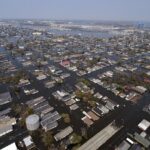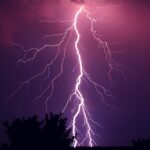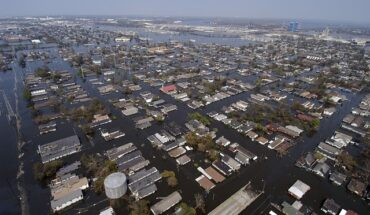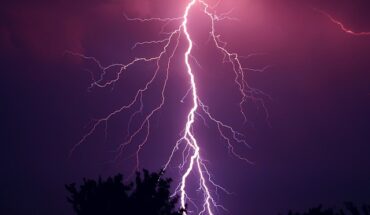Introduction
Floods are among the most common and destructive natural disasters worldwide, affecting millions yearly. Unlike other natural disasters such as hurricanes or blizzards, floods are a coast-to-coast disaster risk in the United States. This makes understanding flood safety incredibly important. From flash floods triggered by heavy rainfall to coastal inundation caused by storm surges, the impact of flooding can be devastating. However, with proper preparation and awareness, individuals and communities can mitigate the risks associated with floods and stay safe during these hazardous events.
Understanding Floods
Floods occur when excessive water overwhelms an area, often leading to overflowing rivers, flash flooding in urban areas, or coastal inundation due to storm surges. Several factors contribute to the severity of flooding, including heavy rainfall, rapid snowmelt, tropical cyclones, and inadequate drainage systems. These flood hazards are found all over the world. Climate change can exacerbate these issues and make flood safety more unpredictable.
Hurricane Katrina
One of the most infamous examples of devastating flooding is Hurricane Katrina, which struck the Gulf Coast of the United States in 2005. The hurricane’s powerful winds and storm surge breached levees in New Orleans, resulting in catastrophic flooding that submerged 80% of the city and led to significant loss of life and property damage.
Preparing for Floods
Preparedness is essential to minimizing floods’ impact on individuals and communities. Here are some critical steps to take before a flood occurs:
- Stay Informed: Monitor weather forecasts and flood warnings issued by local authorities. Sign up for emergency alerts and heed evacuation orders if issued.
- Develop a Family Emergency Plan: Create a comprehensive plan that outlines evacuation routes, emergency contacts, and meeting points. Ensure that all family members know and practice the plan regularly. Your family emergency plan should reflect the three or four most significant risks associated with your area. Your biggest risk may not be flooding but fire or tornadoes. The myriad of potential disasters shows why preparation is essential.
- Secure Your Property: Take preventive measures to protect your home from flood damage, such as installing flood barriers, elevating electrical appliances (if possible), and sealing basement walls. Consider purchasing flood insurance to cover potential losses. All of these solutions require time spent before flooding occurs.
- Build An Emergency Kit: Water and food are vital. Ensure you have enough to feed your family for three days to a week. Consider space blankets to stay warm and dry. Water is a good conductor of heat, meaning that if you’re wet or stuck in wet clothes, you’re at risk of developing hypothermia. Invest in back up communications abilities such as GMRS or amateur radio. You can also purchase sandbags or sandbag alternatives in order to prepare your property in the event of a flood.
Weather.gov provides a list of steps to take to prepare for floods. These steps include creating a communications plan, assembling an emergency kit, knowing your risk, signing up for notifications, preparing your home, preparing your family and pets, charging your electronics, and leaving.
Real-World Example: Brisbane Floods 2011
In January 2011, heavy rainfall caused widespread flooding in Brisbane, Australia. Brisbane is prone to flooding due to its location near the Brisbane River, so many residents needed to prepare for the magnitude of the disaster. The floods inundated thousands of homes and businesses, underscoring the importance of proactive flood preparedness measures.
During a Flood
When a flood is imminent or occurring, it’s crucial to prioritize safety above all else. Follow these guidelines to stay safe during a flood:
- Evacuate if Necessary: If authorities issue evacuation orders, leave the area immediately and follow designated evacuation routes. Please do not attempt to drive or walk through floodwaters, as they can be deeper and swifter than they appear. To illustrate this, the CDC reports that over half of flood-related drownings occur when a vehicle is driven into hazardous water. The next leading cause is people walking next to or through water. As NOAA states, ‘Turn Around, Don’t Drown’.
- Seek Higher Ground: Move to higher ground and avoid low-lying areas prone to flooding. If trapped in a building, move to the highest level and await rescue.
- Turn Off Utilities: Shut off electricity, gas, and water supplies to prevent electrocution and gas leaks. Do not touch electrical equipment if you are standing in water.
As NOAA suggests, ensure you have access to notifications from your local news agency or NOAA itself (many amateur, FRS, and GMRS radios have pre-programmed weather bands). Monitor social media alerts-floods happen fast; once you hear about evacuation warnings, it may be too late.
Real-World Example: Chennai Floods 2015
In December 2015, Chennai, India, experienced catastrophic flooding following heavy rainfall that overwhelmed the city’s drainage infrastructure. Thousands of residents were stranded without food, water, or medical assistance. The floods underscored the importance of timely evacuation and effective disaster response measures.
After a Flood
Once the floodwaters recede, the recovery process begins. Follow these steps to navigate the aftermath of a flood safely:
- Assess Damage: Inspect your property for damage and document any losses for insurance claims. Please exercise caution when entering flooded areas, as they may be contaminated with hazardous materials.
- Clean Up Safely: Use appropriate protective gear to remove mud, debris, and stagnant water from your home. Disinfect contaminated surfaces and discard any food or water that may have been contaminated during the flood.
- Seek Assistance: Contact local authorities, relief organizations such as Team Rubicon or the American Red Cross, and community support services for assistance with cleanup, repairs, and recovery efforts. Reach out to neighbors and offer help to those in need.
Real-World Example: Kerala Floods 2018
In August 2018, the Indian state of Kerala experienced devastating floods following hefty monsoon rains. The floods displaced millions and caused widespread destruction of homes, infrastructure, and agricultural land. The disaster prompted a massive relief and rehabilitation effort involving government agencies, NGOs, and volunteers nationwide.
Conclusion
Floods pose significant risks to lives, property, and infrastructure, as 75% of presidential disaster declarations are associated with flooding. However, with proper preparation, awareness, and response, the potential impact of these disasters can be mitigated. By understanding the causes of flooding, implementing proactive preparedness measures, and knowing how to respond during and after a flood, individuals, and communities can enhance their resilience and stay safe in the face of nature’s fury. Remember, vigilance and preparedness are paramount when it comes to flood safety.















